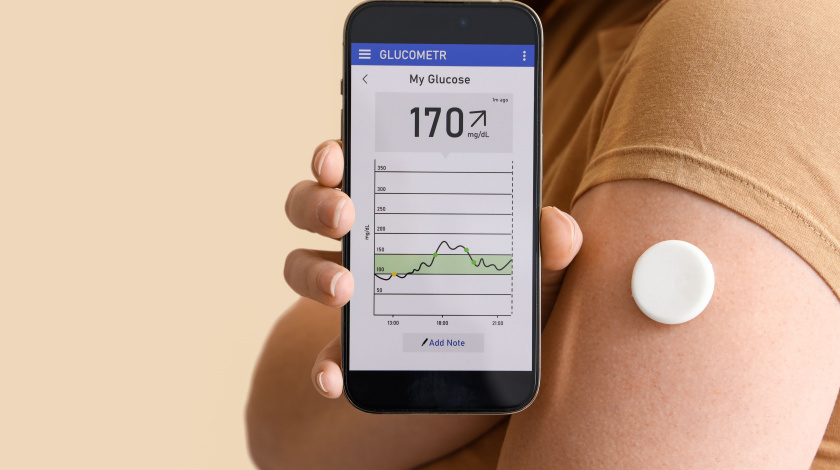In the ever-evolving landscape of diabetes management, Continuous Glucose Monitoring (CGM) devices mark a significant milestone. These revolutionary tools have transformed how individuals with diabetes monitor their blood glucose levels, offering real-time data, improved accuracy, and greater convenience. This blog will explore CGM technology and how it is reshaping the lives of people with diabetes.

- The Evolution of CGM Devices
Continuous Glucose Monitoring has come a long way since its inception. Initially, CGM devices were cumbersome and required frequent calibrations, making them less user-friendly. However, lately, we find ourselves in an era where CGM devices have become significantly more advanced, with many user-friendly features. Let’s delve into some of the noteworthy advancements:
1.1. Improved Accuracy
One of the most critical developments in CGM technology is the improved accuracy of glucose measurements. Nowadays, CGM devices can provide highly precise readings, reducing the need for frequent finger stick tests. This means individuals with diabetes can make more informed decisions about their diet, medication, and exercise.
1.2. Longer Wear Time
Another key improvement is the extended wear time of CGM sensors. In the past, sensors needed replacement every few days, but now, some devices can last up to two weeks or more. This reduces the inconvenience of sensor changes and lowers the overall cost of diabetes management.
1.3. Integration with Insulin Pumps
Several CGM systems are now seamlessly integrated with insulin pumps. This integration allows for automated insulin delivery, known as a closed-loop system, which can help maintain glucose levels within a target range. This development is a game-changer for those with type 1 diabetes.
- Real-time Data for Better Decision-making
CGM devices provide real-time data that can be accessed through a smartphone app or dedicated receiver. This continuous stream of information empowers individuals with diabetes to make timely decisions, reducing the risk of hypoglycemia and hyperglycemia.
2.1. Alerts and Alarms
CGM devices can be programmed to send alerts and alarms when glucose levels are too high or too low. These timely notifications help individuals take corrective action promptly, ensuring better glucose control and reducing the risk of severe complications.
2.2. Trend Analysis
With the ability to see glucose trends over hours or days, CGM users can identify patterns in their blood sugar levels. This insight enables better lifestyle adjustments, making it easier to manage diabetes on a day-to-day basis.
- Enhanced User Experience
CGM manufacturers are focusing on enhancing the overall user experience. The devices are now smaller, more discreet, and user-friendly, which encourages consistent use.
3.1. Smaller, More Discreet Sensors
The CGM sensors themselves have become smaller and more discreet, reducing the visibility and discomfort for users. This is a significant improvement for those who were hesitant to use CGM devices in the past due to their size.
3.2. Improved Adhesion
Adhesive technology has also improved, making sensors more durable and less likely to detach prematurely. Users can now confidently wear CGM devices during various activities, including exercise and showering.
3.3. Simplified Insertion
The insertion process for CGM sensors has become more straightforward, with some devices featuring automatic applicators that make self-insertion easier. This eliminates the need for healthcare professionals to assist with sensor placement.
- Data Sharing and Remote Monitoring
Sharing CGM data with healthcare providers and loved ones has never been easier. CGM devices will have robust connectivity features, allowing for remote monitoring and seamless data sharing.
4.1. Healthcare Provider Access
Individuals can grant their healthcare providers access to their CGM data, enabling them to make more informed treatment decisions during appointments. This collaborative approach enhances the quality of care.
4.2. Family and Caregiver Access
CGM devices also offer the option to share data with family members or caregivers. This feature provides peace of mind for both the individual with diabetes and their loved ones, as they can monitor glucose levels and receive alerts in case of emergencies.
- Cost and Accessibility
As CGM technology advances, it is becoming more accessible and cost-effective. Many insurance plans now cover CGM devices, making them available to a broader population of people with diabetes. Furthermore, CGM manufacturers are introducing more affordable options for different budgets.
- Future Trends in CGM
Looking ahead, the future of CGM technology is promising. Researchers and manufacturers are exploring several exciting trends, including:
6.1. Non-invasive CGM
Efforts are ongoing to develop non-invasive CGM devices that eliminate the need for sensors implanted under the skin. These devices could provide painless and continuous glucose monitoring.
6.2. Artificial Intelligence Integration
AI-driven algorithms are being integrated into CGM devices to provide more accurate predictions and personalized recommendations for diabetes management.
6.3. Improved Interoperability
Enhanced interoperability between CGM devices and insulin pumps, as well as other healthcare technologies, will further streamline diabetes management and data sharing.
Read More: CGM vs. Glucometer – Which Blood Glucose Monitoring System is Right for You?
Conclusion
Continuous Glucose Monitoring has undergone a remarkable transformation, making diabetes management more convenient, accurate, and user-friendly. Real-time data, improved accuracy, and enhanced user experience have become the norm, empowering individuals with diabetes to take control of their health. The future holds even more promise, with non-invasive CGM devices and artificial intelligence integration on the horizon. As CGM technology continues to evolve, it brings us closer to a world where diabetes management is more manageable and less intrusive, significantly improving the quality of life for those with this condition.




